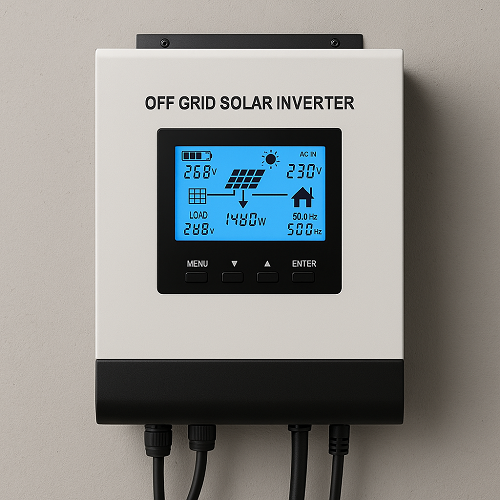Off Grid Solar Inverter refers to a standalone power conversion device that transforms the direct current (DC) generated by solar panels into alternating current (AC) suitable for household or commercial loads.
It enables users in remote or grid‑challenged areas to maintain continuous electricity supply without reliance on utility networks.
By integrating with battery storage, this technology offers uninterrupted power during nighttime or cloudy conditions.
Its independent operation makes it ideal for off‑grid cabins, rural homesteads, and emergency backup systems.
Benefits of Using Off Grid Solar Inverter
Provides true energy independence by using Off Grid Solar Inverter to bridge solar generation and battery storage, eliminating grid dependence.
Reduces electricity bills and peak‑demand charges by tapping into free solar power and stored energy during high‑rate periods.
Enhances system reliability with automatic switchover to battery backup during outages or low solar output.
Promotes environmental sustainability by lowering carbon footprint and reducing reliance on fossil‑fuel generators.
Key Components of an Off Grid Solar Inverter System
Solar panels that convert sunlight into DC electricity, forming the primary energy source.
Battery bank for storing surplus solar energy, sized according to autonomy requirements.
Off Grid Solar Inverter as the core device converting stored DC power into usable AC power for appliances.
Charge controller to regulate battery charging and prevent overcharging or deep discharge.
Mounting hardware and cabling to ensure optimal panel orientation and secure electrical connections.
Design Considerations for Off Grid Solar Inverter Deployment
Selecting the right capacity for your Off Grid Solar Inverter based on detailed load calculations, including peak and continuous demands.
Assessing local solar irradiance and potential shading to size the PV array accurately.
Evaluating battery autonomy to determine days of backup power required during low‑sunlight periods.
Factoring in system expansion, modularity, and future load growth when choosing inverter and battery specifications.
Considering installation site constraints, such as roof strength, ventilation needs, and environmental conditions.
Installation Process of an Off Grid Solar Inverter
Conduct a thorough site survey, obtain necessary permits, and verify local electrical codes.
Mount solar panels on rooftops or ground frames at the optimal tilt and orientation.
Install batteries in a well‑ventilated, temperature‑controlled enclosure to maximize lifespan.
Wire the charge controller between the PV array and the battery bank to manage charging cycles.
Connect the Off Grid Solar Inverter to the battery bank and distribution panel, ensuring correct polarity and grounding.
Perform system commissioning, including voltage checks, load tests, and inverter configuration.
Maintenance and Troubleshooting Off Grid Solar Inverter Systems
Regularly inspect and clean solar panels to maintain peak energy harvest.
Monitor battery health metrics, such as state‑of‑charge (SoC) and electrolyte levels, adjusting as needed.
Review inverter status indicators and error codes to preemptively address faults.
Ensure proper ventilation and temperature control around equipment to avoid thermal derating.
Schedule periodic professional inspections and firmware updates for optimal performance.
































